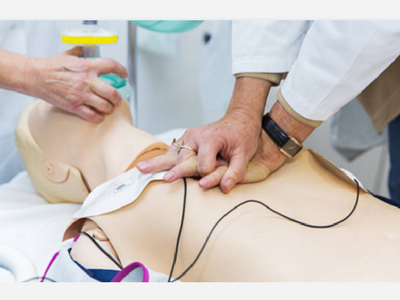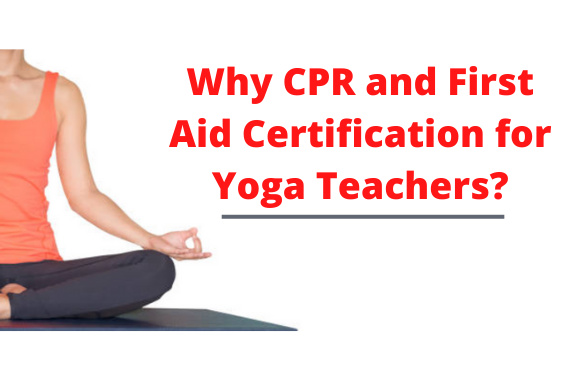
Vital Life-Saving Skills You Should Possess
CPR:
Cardiopulmonary resuscitation is easy to learn the life-saving technique. It is the only known first aid and life-saving skill applied to cardiac arrest victims. CPR is known to increase the chances of survival in the victim by 50%.
The number of persons enrolling for CPR classes is below the recommended range. Cardiac arrest cases are also on the rise, and the chances of having a trained person within the proximity are low. It is, therefore, necessary to have more CPR certified individuals.
The Use of AED:
Automated External Defibrillators (AEDs) is an important device used to restore the heart rhythm to cardiac arrest victims. The performance of CPR alongside the AED is essential in the revival of cardiac arrest victims. It is trained long side CPR in various institutions. The equipment is easy to use and available in most public facilities throughout the United States.
Heimlich Maneuver:
The Heimlich maneuver is a first-aid technique that helps dislodge objects obstructing choking persons. Choking occurs more in children and infants than adults. The procedure differs pending on the age bracket of the victim. Interested persons can enroll for a first aid training course on various online first aid training platforms.
Controlling Bleeding:
When accidents occur, the victims are at risk of bleeding to death. First aid training offers skills on how to stop flowing to prevent excessive loss of blood. The first aid course is readily available on various online platforms.
Managing of Burns:
Burns are quite painful, and depending on the severity could lead to loss of life. The scars left behind as the wound heals can alter the life of the victim.
The first assistance offered to burn victims relieves pain. Providing the best first aid techniques prevents the burn from extending. Proper handling of an injury accelerates the healing process.
Fire is an essential item in the life of a human being. Electrical faults can also result in disasters. Everyone should have the capacity to attend to a burn.
Escaping Building on Fire:
Being trapped in a burning building is one of the scariest experiences. Various institutions and online platforms offer skills of how to exit such situations—techniques on how to carry out rescue operations in saving lives.
Saving Oneself from a Sinking Car:
Though less common cars sink in rivers, lakes, and ocean waters. Skilled persons are less likely to panic, which increases the chances of getting out and saving themselves.
First aid training courses offer skills and knowledge on how to exit the car and swim to safety. When such incidents occur, help might not arrive at the scene early enough. If the passengers are unable to escape, they are at a higher risk of death.
Insect and Snake Bites:
Snakes and some insects are poisonous, and when not adequately attended to, the victim could die. The ability to manage such events could save a life.
Others include getting off a speeding car, prevention and treatment hypothermia, and handling electric shock victims.
How to Apply For Life-Saving Skills Courses?
No Minimum Qualification Required:
Life-saving skills such as first aid and CPR are open for anyone to enroll. The courses have no minimum educational requirements. Age is not a barrier either as a person, so all ages are allowed to register.
The Courses Are Available Online:
Individual institutions offer online first aid training on specified life skills. You can easily enroll for a life-saving course from home with your laptop and the Internet.
The training offers both knowledge and demonstrations. Upon completion of the training, the participants undertake a test for their levels of competence through an online exam. Persons who pass the test get certified instantly. The certificate is readily available as it can be printed online or delivered the same day.
Life-saving training also offers an opportunity for certified persons to refresh their skills after two years. Over time, approved persons are likely to rust due to a lack of frequent application of the skills.
Why Should You Acquire Life-Saving Skills?
It Could Earn You Mileage in Your Career:
Some life skills such as CPR and First Aid Training are essential requirements in some careers. Having such skills will, therefore, open up more opportunities for you.
Owners of organizations are also more likely to recruit people with life-saving skills. A first aid training could make a difference between you and the next person in an interview. People with life-saving skills become assets to an organization. When a life-threatening emergency occurs within an organization, the rescuer becomes a hero, and it could boost your career growth.
They Are Easy to Learn:
Life-saving skills are straightforward and realistic techniques that can be acquired by people of different mental abilities. The procedures applied to make use of the rescuer’s body and other available resources to save oneself and others in case of life-threatening emergencies.
Offers Skills on How to Get Away From Could Be Disasters:
In life-saving training, the trainee learns how to get away from a life-threatening situation. In such occurrences, the individual is also able to save other persons in similar cases.
Prevents Suffering and Faster Healing:
Some life-saving techniques aim at relieving pain and alleviate suffering in the victims. Proper administration of the best first aid techniques lowers the level of damage, preventing making the wounds less extensive.
You Could Save a Life:
Life-saving techniques target at saving lives. A certified person can save their own lives and those of others when disasters occur.
Training on life-saving techniques offers the individual the confidence they require to handle specific emergencies and save lives. Untrained persons are often afraid of doing the wrong thing and attracting legal suits. In the event of health emergencies, people to standby and watch as lives are lost.
Boosts Self-Worth:
The ability to help another person boosts an individual’s self-worth. Saving a life leaves a feeling of satisfaction within the individual. The inability to help oneself and others out of a life-threatening emergency leave the victim in a hopeless state, which results in panic.
The Knowledge Acquired Is Invaluable:
Life-saving courses offer a lot of knowledge. The information taught is applicable in other areas of life. Such knowledge can improve an individual’s quality of life. The knowledge and skills are also easily transferable to the loved ones and others who might need them.
Offers Ability to Prevent Health Emergencies From Occurring:
Life-saving techniques training provides the individual with skills on how to prevent certain dangerous events from occurring. Preventive measures taught in such courses apply to the routine activities.
The Rescue Mission Is More Effective With Skilled Persons:
A team of trained persons can coordinate a rescue operation and achieve greater success. Skilled persons are less likely to waste time. They can quickly form groups and follow with the known procedures carrying out tasks without stepping on each other’s toes.
Life-saving training covers skills on team operations and the different roles of the team members in separate incidents. The ability of the teams to work together determines the amount of time taken to complete a mission.
Skilled persons can keep the audience calm and at a safe distance. Overcrowding can quickly slow down a rescue process in case of a disaster. However, people give way when people are confident in the rescuer’s ability to save the lives of those involved.
Early Diagnosis:
The training offers skills in early recognition of specific emergency conditions and how to act on them. Some situations are urgent, and the victims must be attended to as soon as possible to save lives. First aid training, for instance, offers skills in diagnosing snake bites victims, choking persons, and sudden cardiac arrest. Only through proper diagnosis of the victim’s condition can the victim be saved.
The training also offers skills to help the rescuer define if a victim can be saved or is already dead. In case of a disaster involving multiple victims, the rescuer can comfortably concentrate on victims whose lives are at a higher risk of death.
Summary:
Today, anyone can learn the basic Life-saving skills by joining the Online First Aid Training and Certification Courses. The procedure for registration is simple, and the course begins as soon after registration. The advantages of being a trainee on life-saving techniques are quite many. Skilled persons are quite confident, maintaining calm and calming down others in case of disasters. Certified persons are more likely to take the initiative to save a life when emergencies occur.
The post originally Published here








